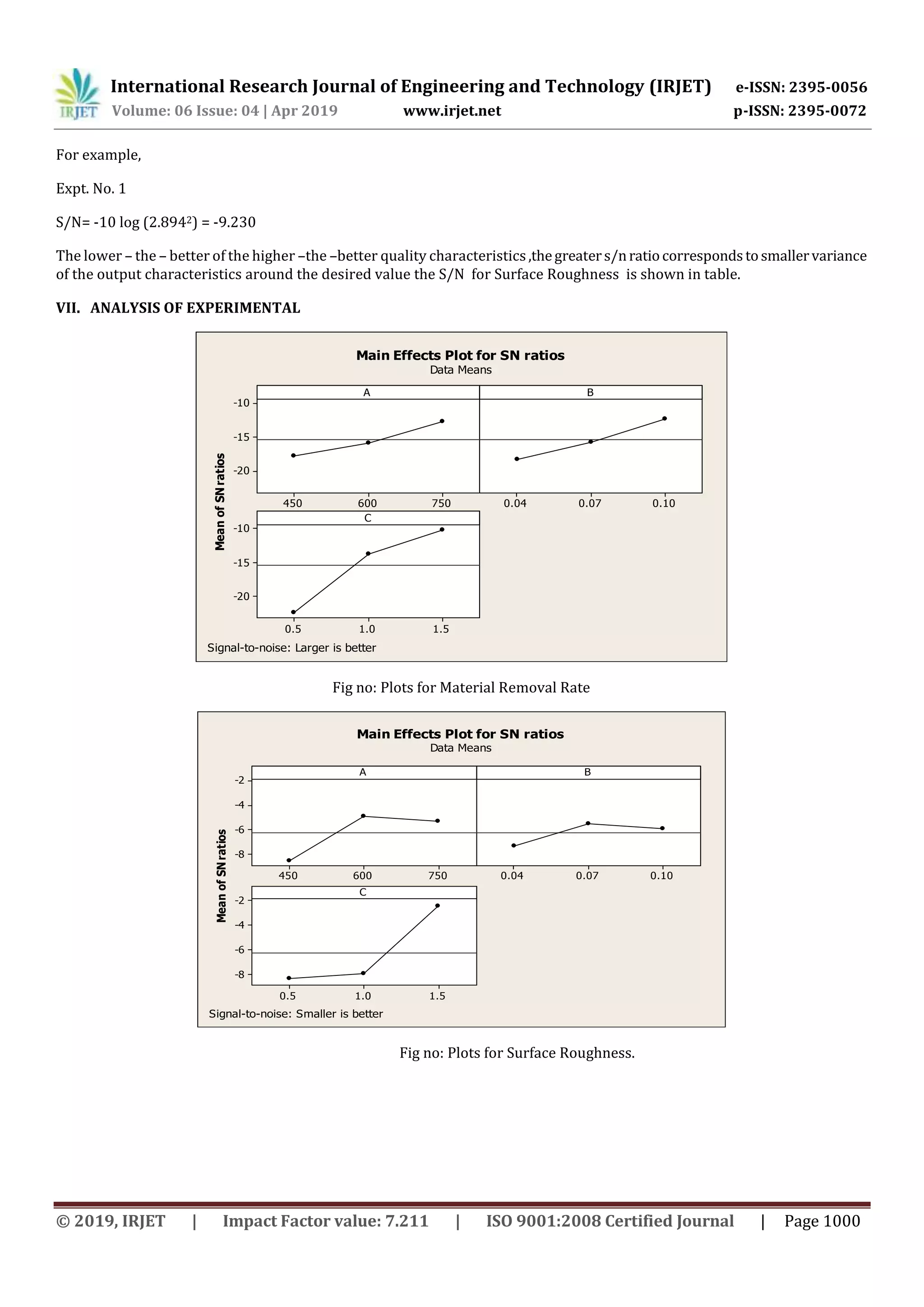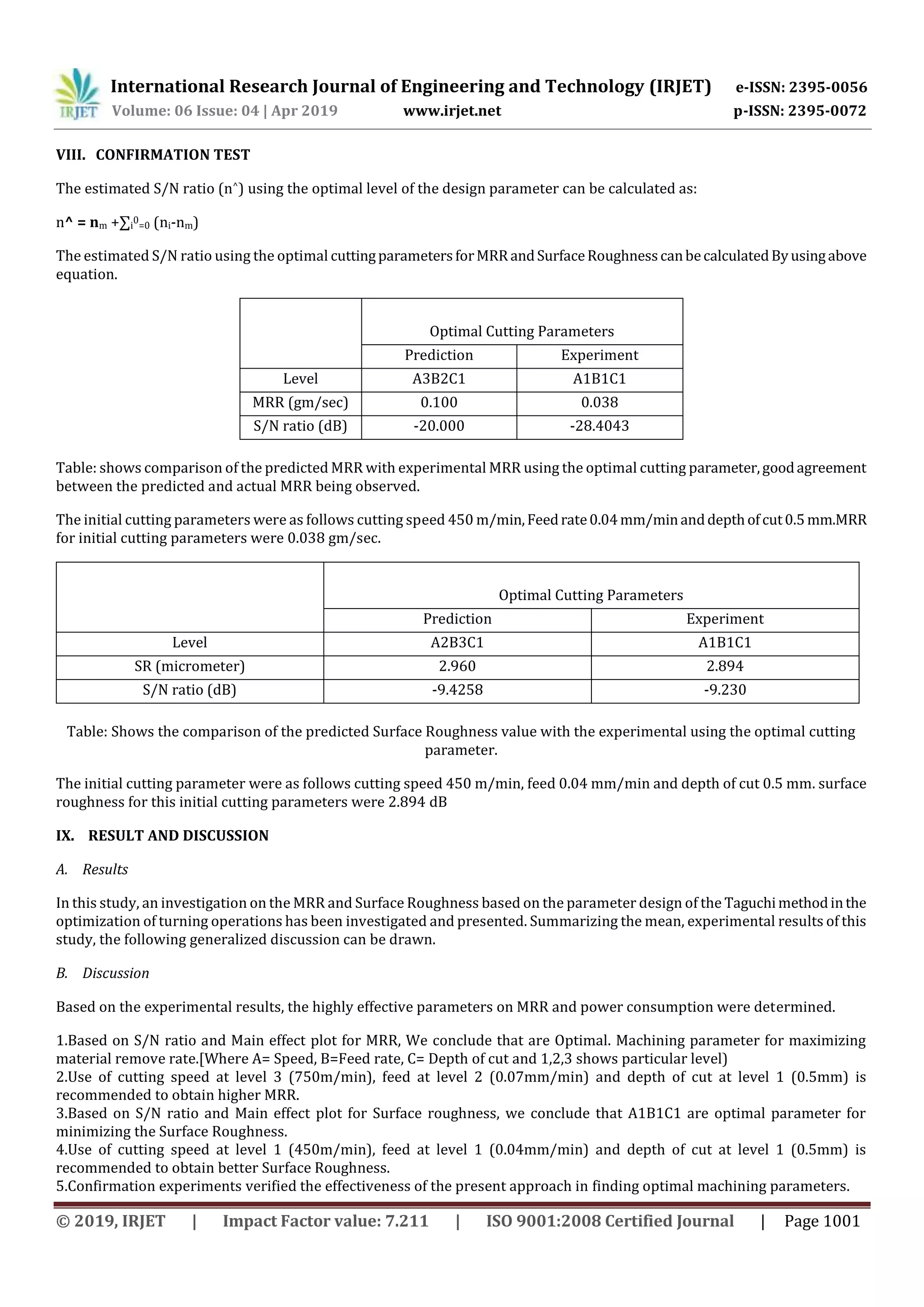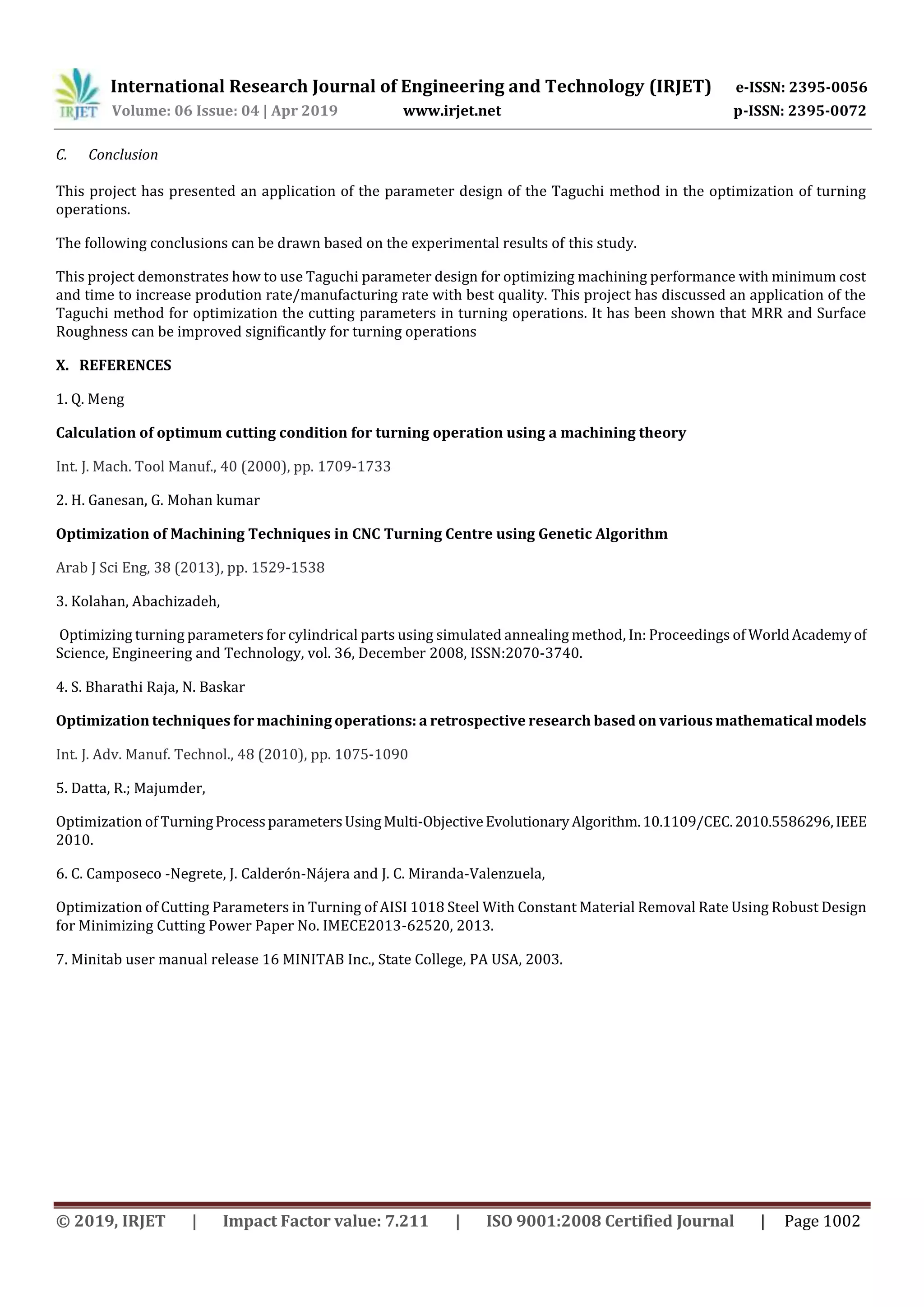This document presents an optimization of cutting parameters during turning of AISI 1018 steel to achieve maximum material removal rate and minimum surface roughness. The study uses Taguchi's design of experiments with an L9 orthogonal array to test cutting speed, feed rate, and depth of cut at three levels. Analysis of variance on the signal-to-noise ratios is used to determine the most influential parameters and their optimal levels for improving the two responses. The results provide cutting condition recommendations to machine designers and operators.
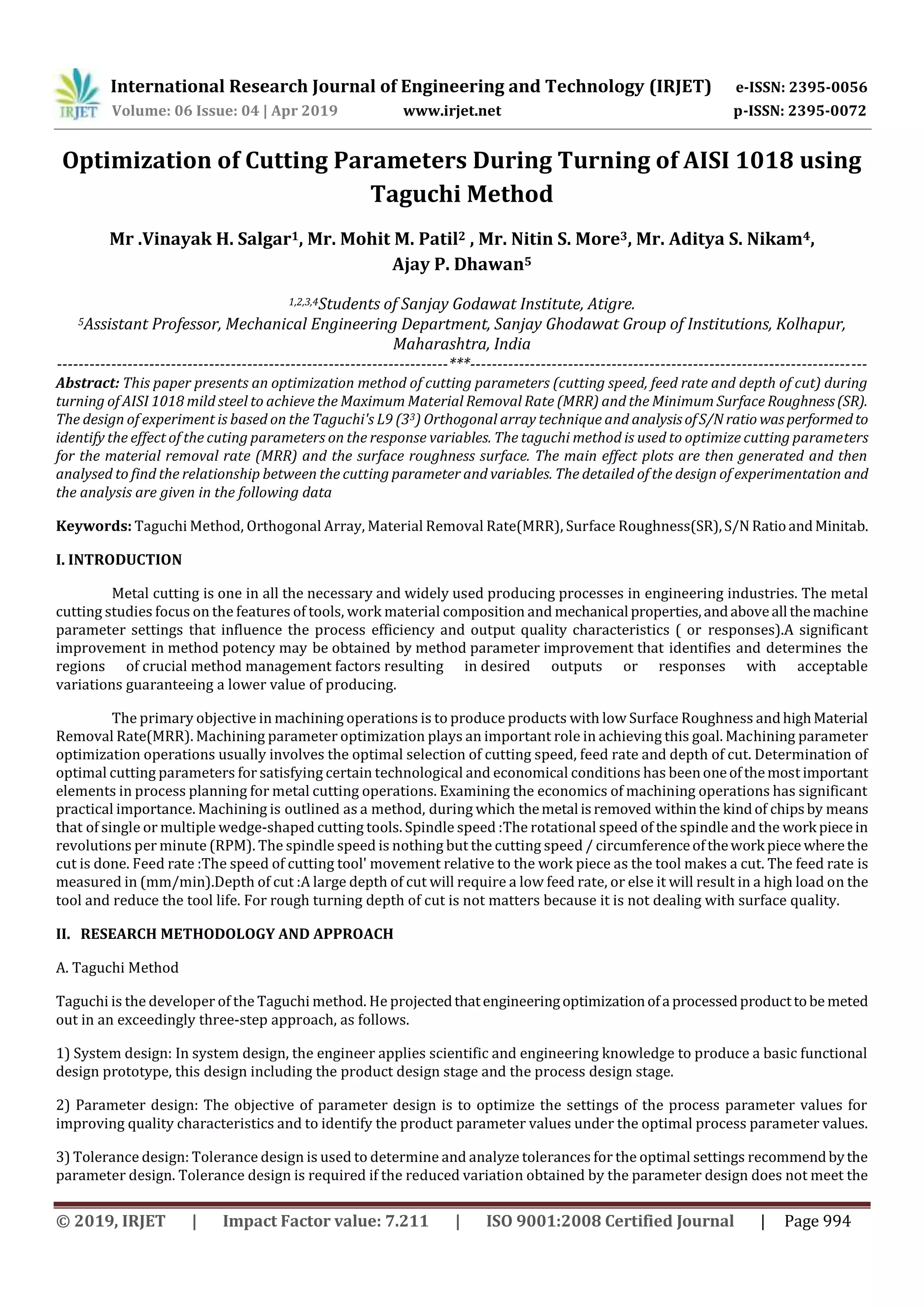
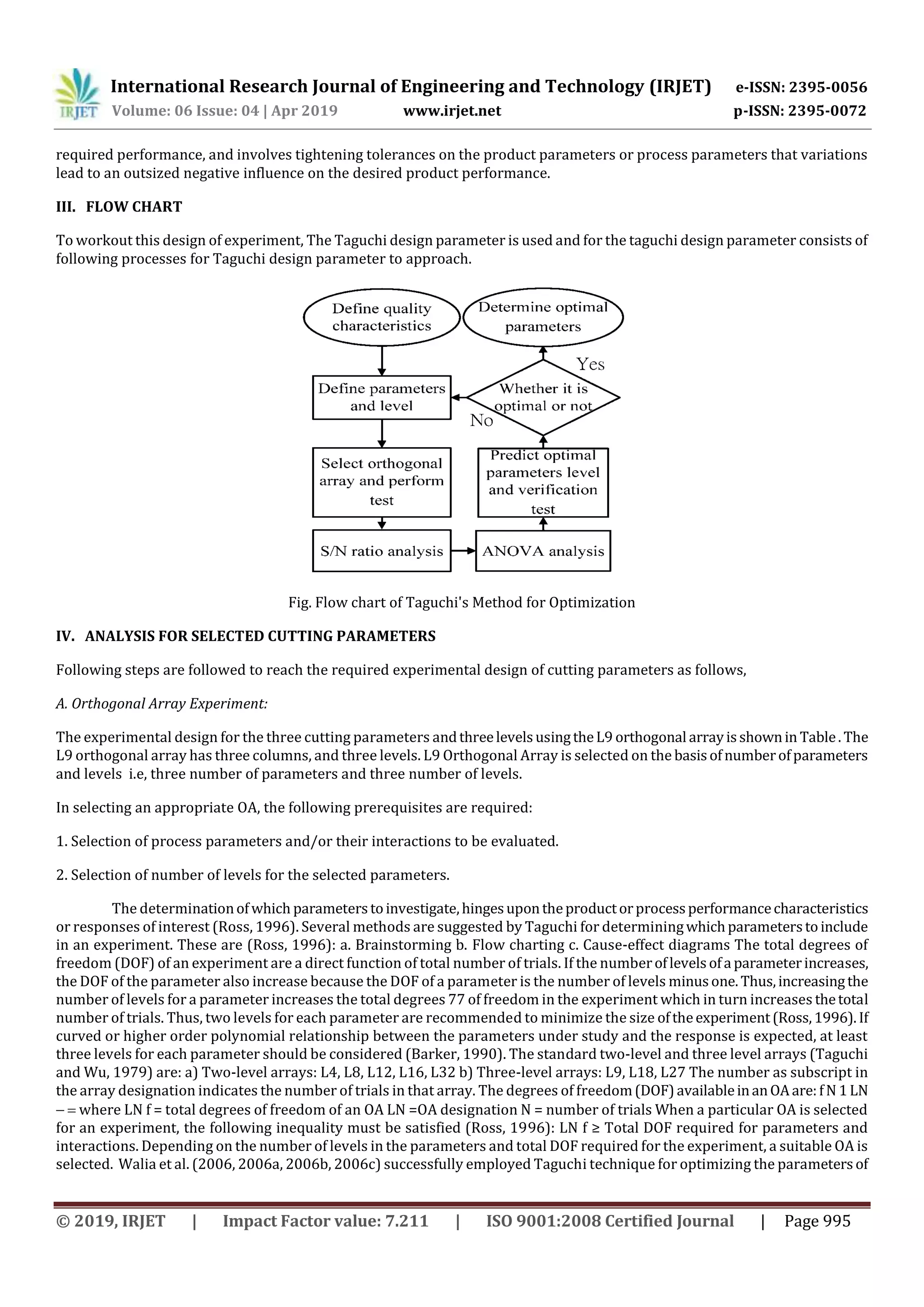
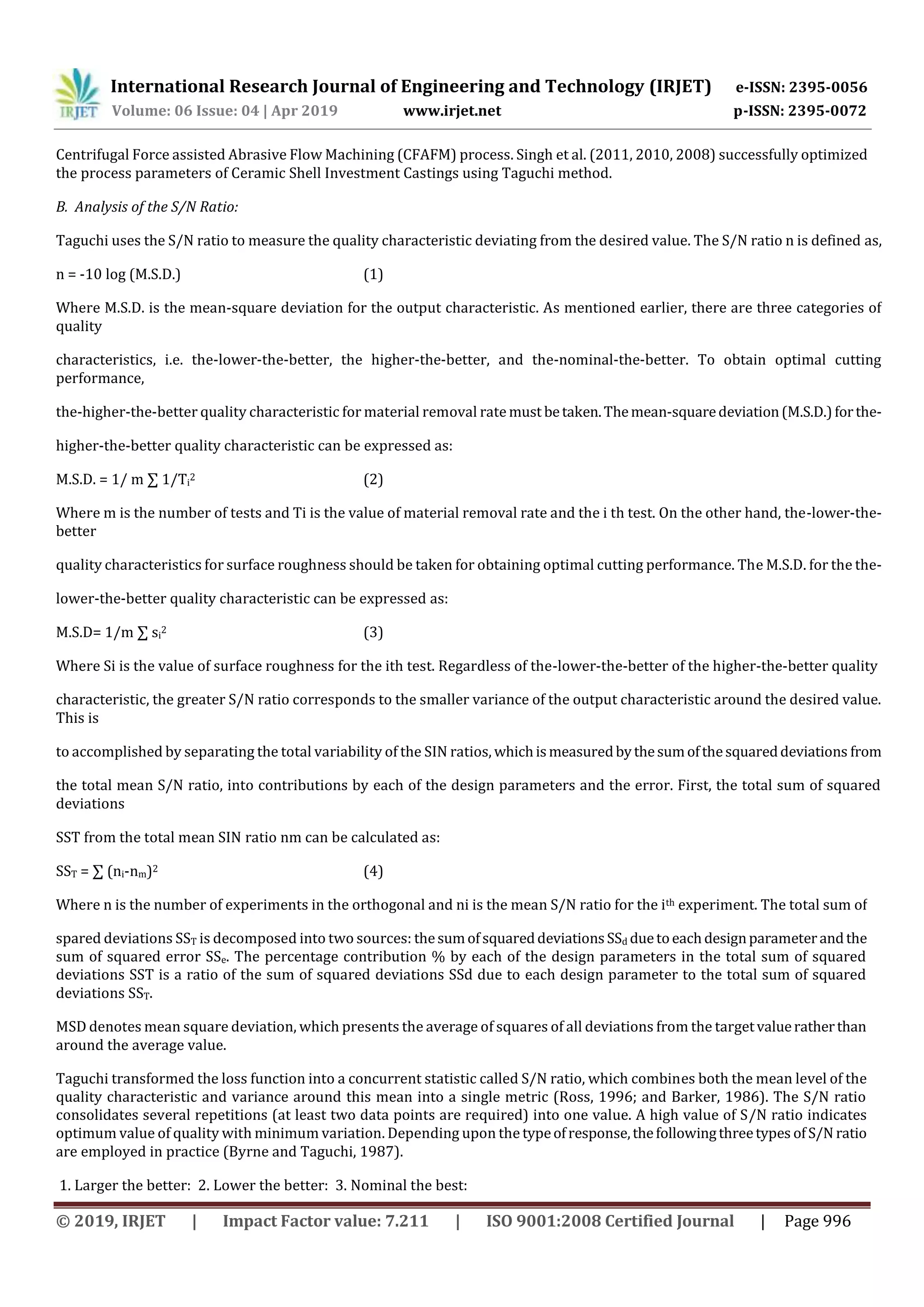
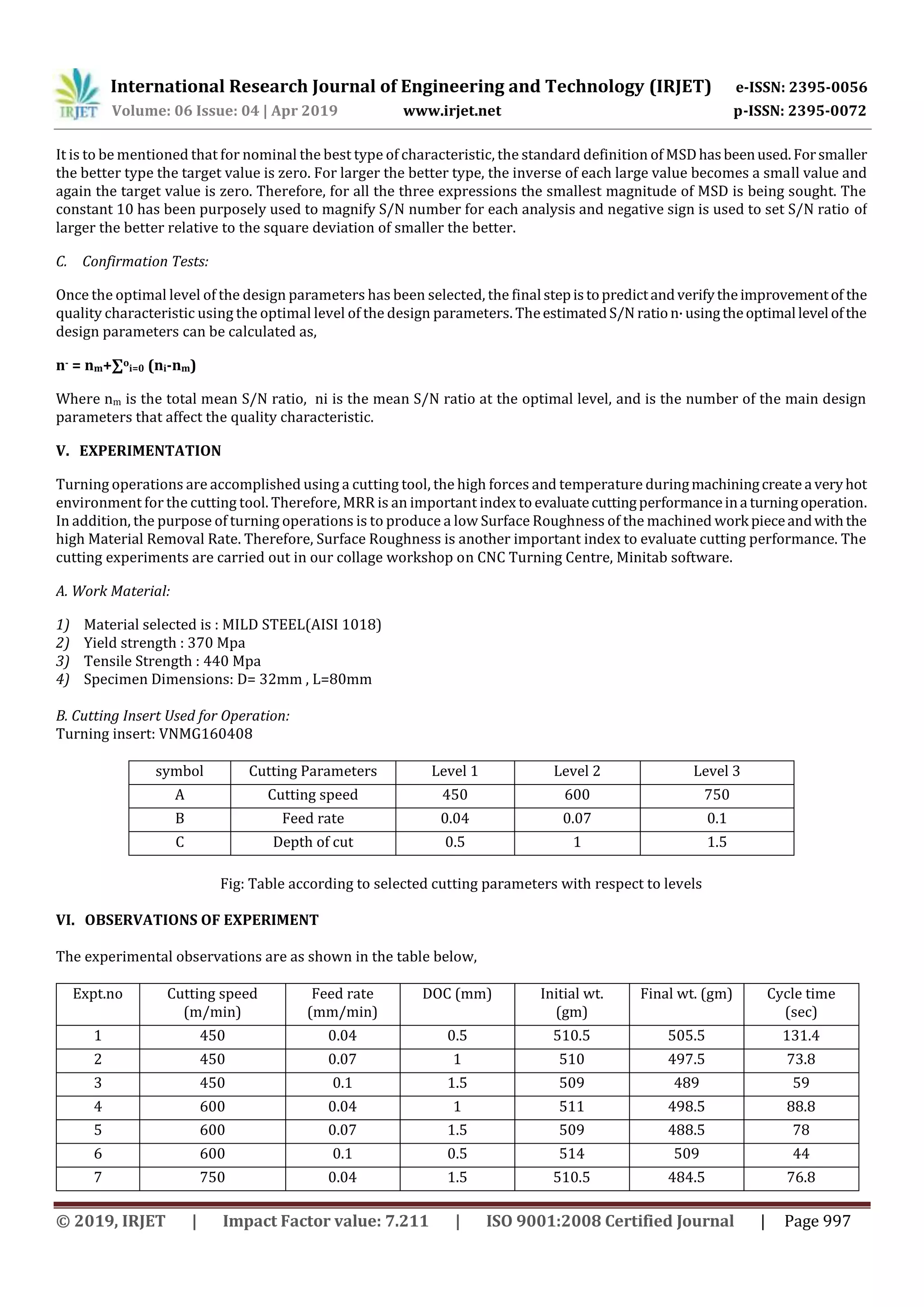
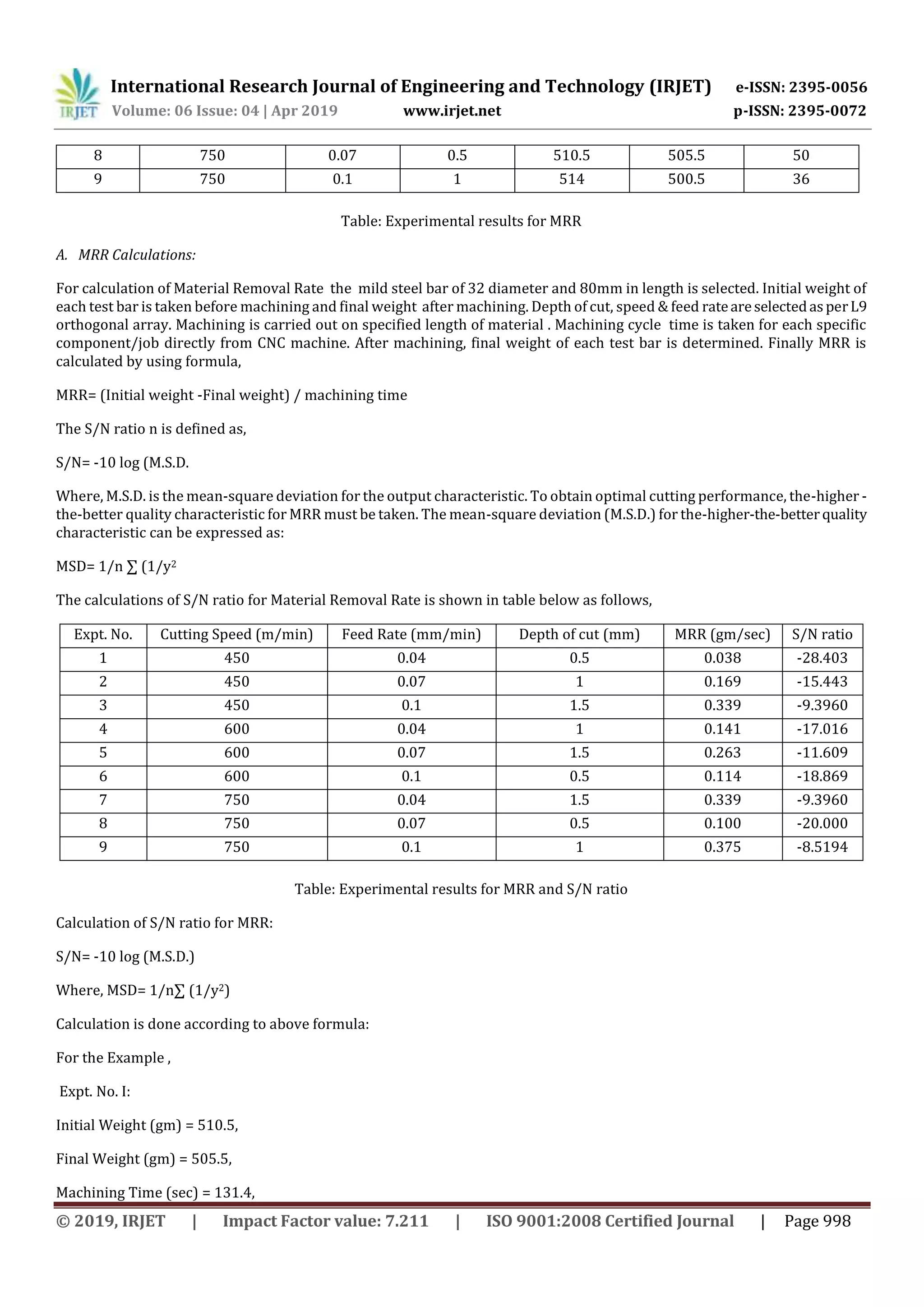
![International Research Journal of Engineering and Technology (IRJET) e-ISSN: 2395-0056
Volume: 06 Issue: 04 | Apr 2019 www.irjet.net p-ISSN: 2395-0072
© 2019, IRJET | Impact Factor value: 7.211 | ISO 9001:2008 Certified Journal | Page 999
MRR = ( 510.5-505.5)/131.4
MRR= 0.038 gm/sec
For S/N Ratio,
S/N= 10 log (1/1 *[1/ 0.0382]] = -28.4043.
For quality characteristic, a greater S/N ratio corresponds to better quality characteristics. Therefore, the optimal level of the
process parameters is the level with the greatest S/N ratio.
B. Surface Roughness:
A roughness tester is used to quickly and accurately determine the surface texture or surface roughness of a material.
A roughness tester shows the measured roughness depth (Rz) as well as the mean roughness value (Ra) in micrometers or
microns (µm). Surface roughness often shortened to roughness, is a component of surface texture. It is quantified by the
deviations in the direction of the normal vector of a real surface from its ideal form. If these deviations are large, the surfaceis
rough; if they are small, the surface is smooth. In surface metrology,roughnessistypicallyconsideredto bethehigh-frequency,
short-wavelength component of a measured surface. However, in practiceitisoftennecessarytoknow boththeamplitudeand
frequency to ensure that a surface is fit for a purpose. Roughness plays an important role in determining how a real objectwill
interact with its environment. In tribology, roughsurfacesusually wear morequicklyandhavehigher friction coefficientsthan
smooth surfaces. Roughness is often a good predictor of the performance of a mechanical component, since irregularities on
the surface may form nucleation sites for cracks or corrosion. On the other hand, roughness may promote adhesion.Generally
speaking, rather than scale specific descriptors, cross-scale descriptors such as surface fractality provide more meaningful
predictions of mechanical interactions at surfaces including contact stiffness and static friction.
Although a high roughness value is often undesirable, it can be difficult and expensive to control in manufacturing. For
example, it is difficult and expensive to control surface roughness of fused deposition modelling (FDM) manufactured
parts. Decreasing the roughness of a surface usually increases its manufacturing cost. This often resultsina trade-offbetween
the manufacturing cost of a component and its performance in application.
Roughness can be measured by manual comparison against a "surface roughness comparator" (a sample of known surface
roughness), but more generally a surface profile measurement is madewitha profilometer. Thesecanbeofthecontactvariety
(typically a diamond stylus) or optical (e.g.: a white light interferometer or laser scanning confocal microscope).
However, controlled roughness can often be desirable. For example, a gloss surfacecanbetooshinytotheeyeand tooslippery
to the finger (a touchpad is a good example) so a controlled roughness is required. This is a case where both amplitude and
frequency are very important.
Expt.No Cutting speed
(m/min)
Feed rate
(mm/min)
DOC (mm) SR (micrometer) S/N ratio
1 450 0.04 0.5 2.894 -9.23
2 450 0.07 1 4.033 -12.1126
3 450 0.1 1.5 1.628 -4.2331
4 600 0.04 1 2.387 -7.5570
5 600 0.07 1.5 0.786 2.0915
6 600 0.1 0.5 2.960 -9.4258
7 750 0.04 1.5 1.830 -5.2490
8 750 0.07 0.5 2.110 -6.4856
9 750 0.1 1 1.617 -4.1742
Table: Experimental results for SR and S/N ratio.
Calculation of S/N ratio for Surface Roughness:
S/N ratio= -10 log (M.S.D)2
Calculation is done according to above formula,](https://image.slidesharecdn.com/irjet-v6i4214-190622070425/75/IRJET-Optimization-of-Cutting-Parameters-During-Turning-of-AISI-1018-using-Taguchi-Method-6-2048.jpg)
